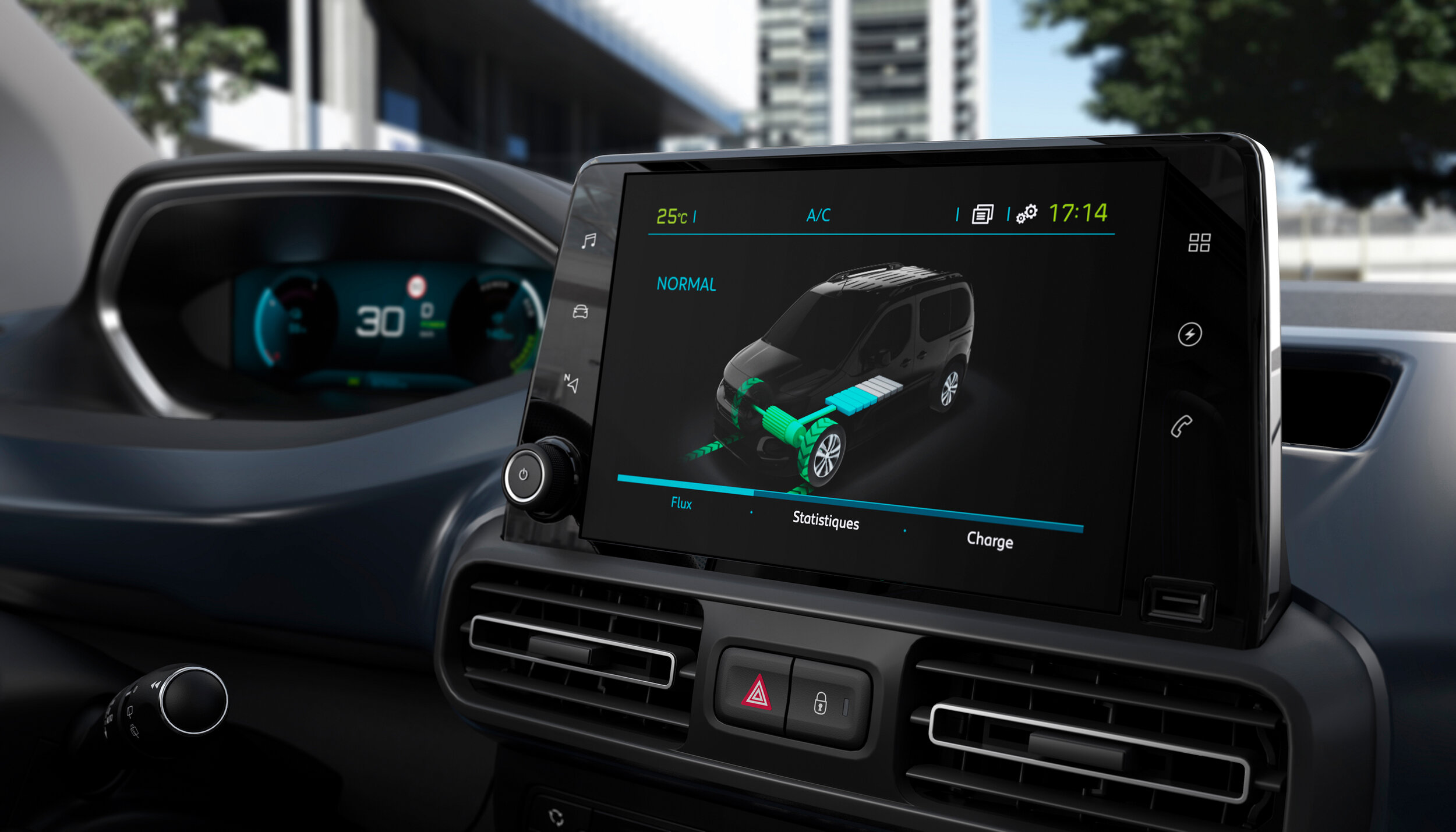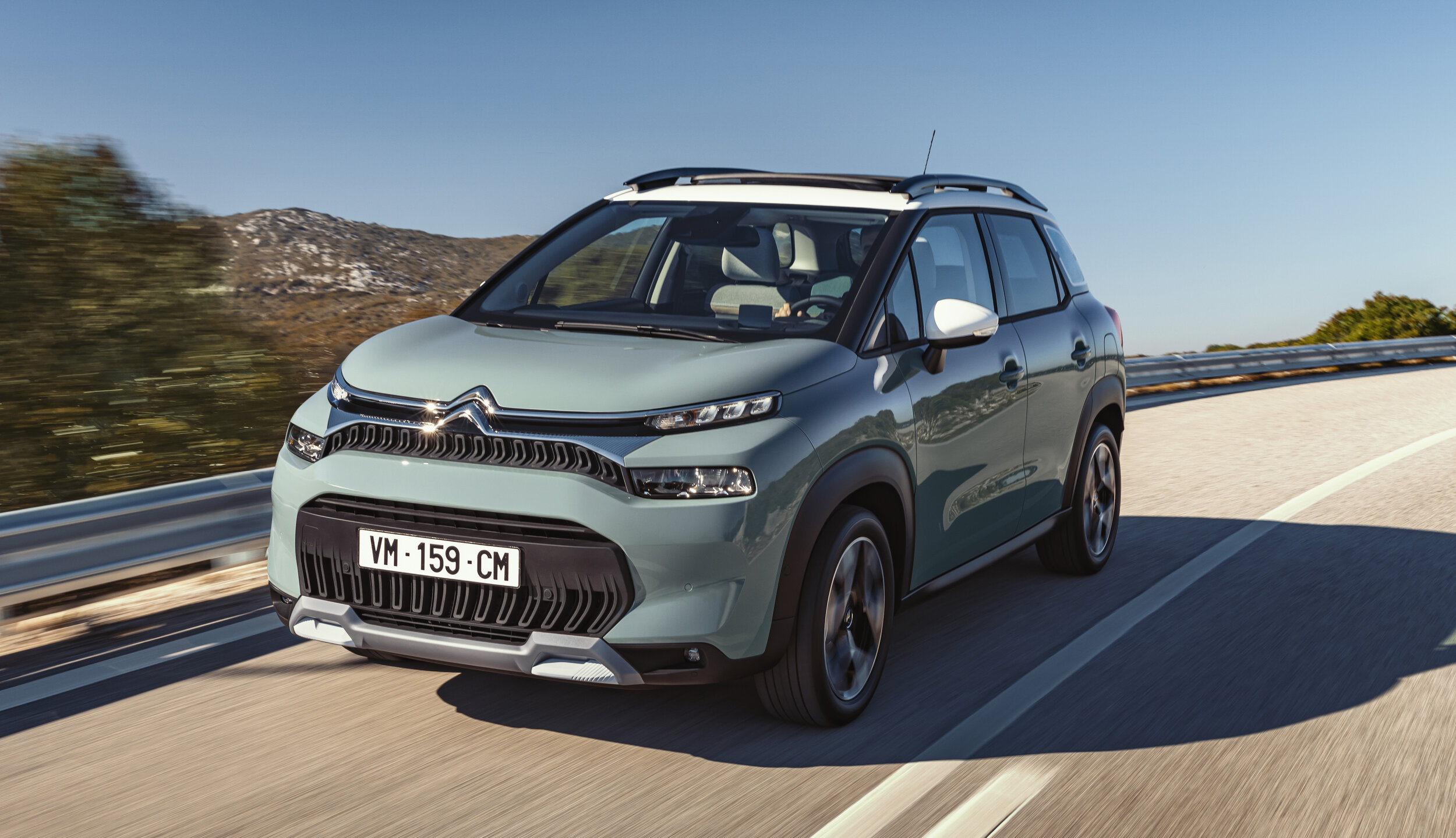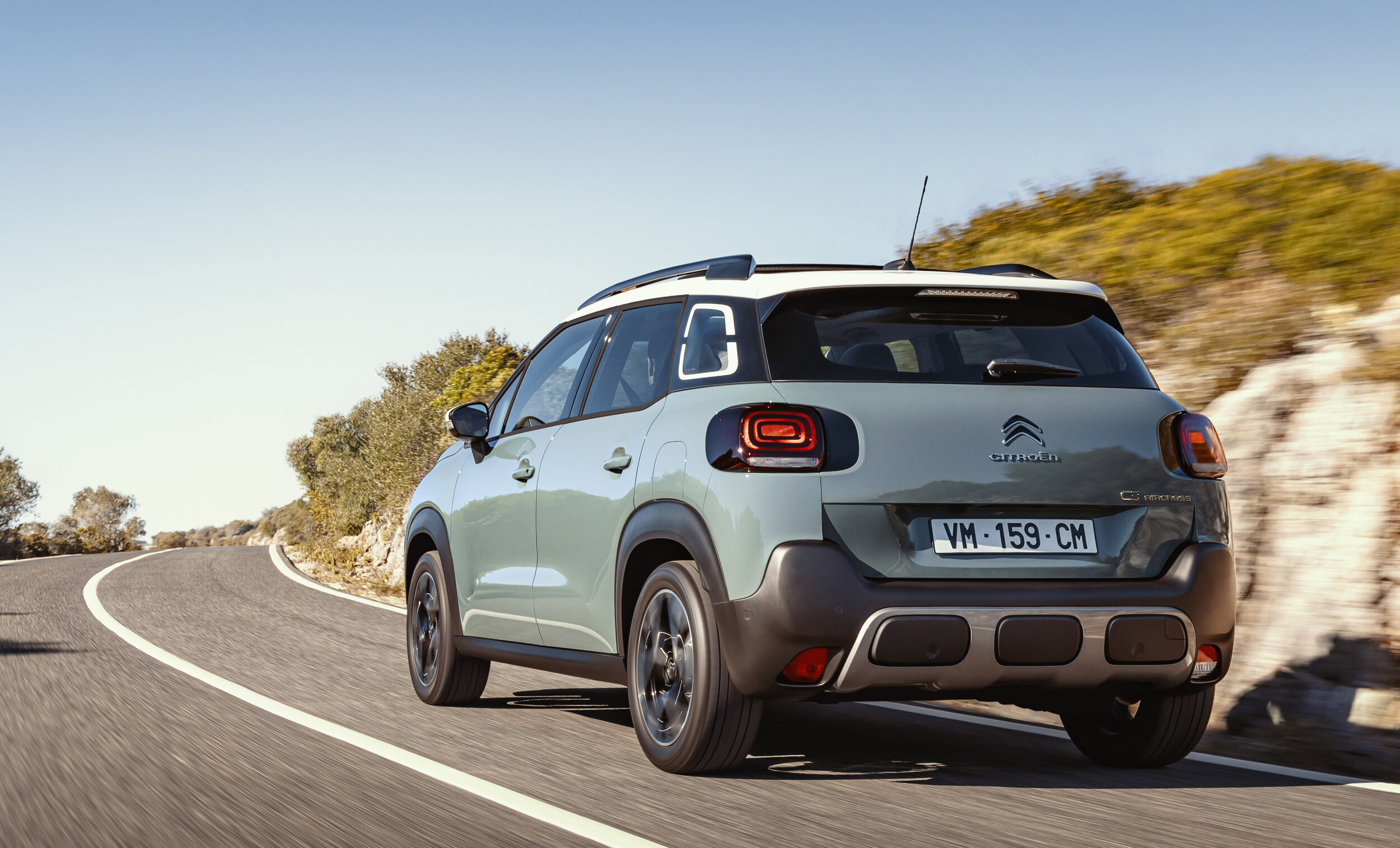Updated e-208 a mid-2023 arrival
/Factory announces battery upgrade to improve range, charging
Read MoreFactory announces battery upgrade to improve range, charging
Read MoreGerman make’s new distributor is excited by impending electric-driven interpretation of the classic Holden.
Read MoreStellantis announces no change for import arrangements for its vehicles here.
Read More
TIRED of rocking around in a large expensive European sports utility wagon?
Despite those vehicles being very strong sellers, Citroen has determined there are enough people out there desiring to break from the trend.
If you’re in that crowd, say ‘bonjour’ to the C5X, a large prestige model unveiled internationally overnight that will serve as the brand’s new flagship.
Ostensibly a large high riding car that for those who cannot see themselves in something bulkier and blockier, it delivers an emphasis on comfort and design, yet also stands out as being proudly unconventional in several respects, notably the design.
Part SUV (hence the raised height), part station wagon (so, loads of interior space) and part sedan (the overall elegance) … Citroen is famous for being unconventional from time to time, but this one seems especially eclectic. Little wonder that its maker has voiced expectation of it straddling several segments of the market.
Certain styling cues – most notably the LED headlight design – are inspired by the radical CXperience concept, which was shown in 2016 and with which the C5X also shares its so-called ‘Advanced Comfort’ design ethos.
The model’s ‘X’ suffix? It’s not really an off-road reference. Instead, Citroen says, it’s about the marketing positioning. This is a model at “the crossroad of customers’ needs”.
Production for right-hand drive countries begins next year and there’s no word yet from national brand rights holder AutoDistributors NZ as to whether we will see it. Perhaps not; large Citroens have always struggled here.
Still, you’d have to think styling like this would allow it to stand out from the Q7 and X5 crowd.
Measuring in at a lengthy 4.8 metres, the Citroen C5 X is noticeably longer than the C5 Aircross, the largest SUV Citroen has offered until now. It starts out on 19-inch wheels that are more slender than usual, for economy reasons.
To compete with SUVs, it maximises practicality. The boot measures in at 545 litres, increasing in volume to 1640 litres when the rear seats are folded forward.
Primarily, thought, it is about passenger needs. Citroen is all about ‘Advanced Comfort’; it’s a credo that expresses in the seat design and the suspension suspension setup.

The car aims to replicate the ‘magic carpet’ driving style of historic Citroen sedans such as the DS and CX. It uses a hydraulic cushion suspension set-up, as per the Aircross, to deliver a ride that aims to “overcome all obstacles, potholes, kerbs, speed bumps and other road connections”.
The supreme version of this evidences in a plug-in hybrid version is equipped as standard with a drive mode selector giving a choice of three suspension settings.
‘Advanced Comfort’ is also prevalent in the cabin. The seats are designed with what Citroen says is a mattress-style approach.
The interior includes some premium materials, including wood inserts across the dashboard fascia and extending into the doors. With no traditional gear selector, the centre console is uncluttered and includes plenty of physical buttons for things like climate control. Sitting atop the dashboard is a large 12-inch touchscreen that provides for a new type of infotainment system with a widget-based display and smartphone connectivity via Bluetooth and USB-C, in addition to wireless charging.
There will be only be petrol engine options – yup, diesel is dead even with the brand family that made it famous in cars. The plug-in hybrid model is expected to be most popular. This has an output of 168kW and an electric driving range of more than 50 kilometres will be available.
Several driver assistance features will add to the car's tech-filled nature, with an extended head-up display, adaptive cruise control with stop-and-go functionality and lane-keep assist.


THE first to wear Peugeot’s new logo – and pretty much everything behind that fresh ‘coat of arms’ moniker is fresh, as well.
So it goes for the next-generation 308 hatchback, revealed internationally today and set to land in early 2022, a timing that might well synch neatly with the distributor opening a smart new flagship dealership.
The latest car won‘t seem like a wholly new start, in that it carries over much of the silhouette of the outgoing model - the same chunky, snub-nose and retaining a deep c-pillar; however the detailing is very different.
Still, the aerodynamic efficiency has improved, cutting drag to 0.28Cd, body stiffness has been boosted by using aircraft-style adhesive in key areas and the chassis, though a variation of the current car’s EMP2 platform, has been significantly upgraded. The wheelbase is 55mm longer, which should free up more rear seat space, and total length has gone up by 110mm. The car also sits 20mm lower to the road.
The 308 launches with three versions of the familiar 1.2-litre PureTech three-cylinder turbo petrol engine, in 82kW and 97kW forms, with an eight-speed automatic gearbox, but will also deliver in electrified versions too - a pair of plug-in hybrids, using the 1.6-litre turbo PureTech four-cylinder petrol engine, combined with an 81kW electric motor and a 12.4kWh battery.
The powerhouse version of that line makes 168kW, with CO2 emissions of 26 grams per kilometre, and an electric range of 59km. Peugeot also does a 132kW version, with CO2 emissions of 25g/km and an electric range of 60km.
There’s talk a high-performance 308 Peugeot Sport Engineered will come along in due course, powered by a 220kW, all-wheel-drive version of the PHEV system.
PHEV versions have an optional 7.4kW charging system which will allow them to be fully charged in one hour and 50 minutes (or just under four hours with the standard 3.7kW charging system).
In Europe Peugeot will offer PHEV buyers membership of the Peugeot Easy-Charge system which will include access to 220,000 public charging points. The PHEV 308s' batteries will be warrantied for eight years or 160,000km.
A new Drive Assist 2.0 pack includes adaptive cruise control with Stop and Go function – just with the auto, but it’s very likely that will be the sole transmission choice here - and a lane keeping aid. There's also a new function, which suggests the best moments to change lanes to overtake slower moving traffic. A system that adjusts the cruise control speed if a corner is coming up also debuts.
High-set instruments and a small, low-set wheel … yup, that i-Cockpit seems set to stay. Upmarket editions have a fully-digital '3D' ten-inch screen for the instrument panel, while the central touchscreen is also 10 inches across. This now comes with two separate control areas, aside from the main screen, one showing a panel of "fully configurable virtual i-toggles" - a series of touchscreen buttons of which you can decide the layout and functions.
Wireless phone connectivity for Apple CarPlay and screen mirroring is standard. A 10-speaker Focal sound system, eight-colour ambient LED lighting, and a selection of USB ports also feature. There's over-the-air software updates and also a 'Hello, Peugeot' digital voice assistant.
Front seat occupants achieve 10-way power-adjustable massaging chairs, trimmed in Alcantara and leather with contrast stitching. There's also a new air filtration system, which prevents airborne pollutants from entering the cabin.
The auto’s gear selector is a toggle-type and there’s a button for selecting Electric, Hybrid, Eco, Normal and Sport modes, depending upon which engine you've chosen.
Four hundred and 12 litres of boot space is availed with the rear seats up, an eight litre reduction on the current car, expanding to 1323 litres with the second row folded. An additional 34 litres of storage space can be utilised through small compartments spread around the cabin
Styling-wise, the 308 gets the deep, concave grille, slim headlights, and 'fang' LED daytime running lights from the recently-facelifted 3008 and 5008 crossovers. At the back, it has slim-fit brake lights with a connecting light bar running across the boot lid. The new badge, set into the centre of the grille, is designed so that the radar unit for the active cruise control can now sit behind it.
The new model’s entry could coincide with the opening of a three-storey Peugeot Citroen supersite the Armstrong motor group will build in Greenlane, Auckland. It will also be one of the first premises in the world to feature the new Peugeot brand identity.
Armstrong’s managing director Rick Armstrong, whose Autodistributors’ NZ holds national distribution rights to PSA brands, says the building is a sign of the group’s commitment to the Peugeot and Citroen marques and is an indicator of what it believes is the huge future growth opportunity for the two brands.

AN electric passenger version of a Peugeot van just unveiled for the United Kingdom is not being discounted by the New Zealand distributor, but right now it has a lower priority than product already signed up.
Arek Zywot, commercial manager for Peugeot rights holder AutodistributorsNZ, says the e-Rifter, which can carry up to seven passengers over 273 kilometres on battery power, is certainly of interest, though it still needs to be convinced it would achieve requisite public support.
On top of this, there’s also a commitment to stay true to a Peugeot electric vehicle release strategy that first of all prioritises pure passenger models and then shifts attention to full scale commercials which rely in battery impetus.

That rollout is expected to begin in the third quarter of this year with arrival of the e-2008, a version of the make’s popular compact sports utility with a 50kWh battery feeding an electric motor creating its 101kW and maximum possible 300Nm of torque, that will sit with the three 1.2-litre petrol derivatives already here. Price and specification has yet to be announced.
Ultimately, Autodistributors NZ will then look to the commercial vehicles options, potentially including the Partner van from which e-Rifter derives, Zywot has explained. So, anything with e-Rifter would be left until those programmes were established.
That’s not saying the model isn’t being ignored.
“We never say no to a product like that, however at this stage we are not considering it in the foreseeable future.”

Whether the derivative would even be available to NZ at the moment has not been explored, but he reminded that at the moment Peugeot is prioritising its EV production to sustain demand in Europe, where brands have ramped up electric effort in order to offset the impact of the now-enacted tough European Union CO2 mandate. Brands whose fleet average exceeds the EU’s 95 grams per kilometre target face stiff fines.
“At the moment Europe is trying to meet the emissions target, and that takes priority.”
On top of this, there’s still a degree of concern that actual NZ uptake for a vehicle of this type would not be strong enough to warrant having it here.
“Demand in NZ right now doesn’t show there is a big interest for vehicles like that at this stage.” That might change, of course. “Once the market proves there is a demand then we would definitely look at it.”
Even though e-Rifter potentially positions as primarily for private owner interest, being van-based it still rates as commercial vehicle and on that side “we are more focused at the moment on the commercial variants than those in a passenger configuration.”

Based the EMP2 platform developed by PSA, which is now a partner in the new Stellantis family, the e-Rifter runs with three driving modes - ‘eco’, ‘normal’ and ‘power’. Each mode changes the amount of battery power available, switching between performance and maximising range.
As standard, the e-Rifter is fitted with 7.4kW single-phase charging compatibility, with an optional 11kW on-board charger offered too. At home, from a 7.4kW wallbox, a recharge will take 7.5 hours and can be managed by a charging app, allowing owners to schedule recharges for off-peak hours. At the roadside, 100kW DC charging is supported, meaning that a 0-80 percent charge can be completed in 30 minutes.
Inside, an eight-inch central touchscreen and Peugeot’s i-Cockpit infotainment system come as standard along with Apple CarPlay and Android Auto compatibility.
There’s a choice of ‘Standard’ or ‘Long’ variants, changing the length of the e-Rifter between 4.4 metres and 4.75m. Both offer five and seven-seat options and boot space ranges from 775 litres to 4000 litres. Unbraked towing capacity stands at a quoted 750kg.


ARRIVAL in the third quarter of this year is envisaged for the updated Citroen C3 Aircross, revealed internationally overnight.
A restyling, new infotainment and more versatile interior storage are among alterations for the compact crossover. It’s the five-seater model’s first major update since it released in 2017.
The design changes mainly occur at the front. New chrome chevron shapes extend out to restyled LED headlights and a new geometric-pattern grille, while a skid plate with coloured inserts also features. The lower lights move from the rounded squares of the old model to thinner rectangular units. Citroën says it gives “greater structure with the impression of a higher-set bonnet”.
A new diamond cut and gloss black alloy wheel design also arrives, available in 16 and 17-inch sizes.
On the inside, the basic design and layout of the dashboard remains, but Citroen has introduced new trim options and it also adopts front seats shared with the next-size-up C5 Aircross.
New Zealand pricing and final specifications are as yet unresolved, but on strength of past preferences it seems likely rights’ holder Autodistributors NZ will adopt the upmarket trim that includes a larger and sharper nine-inch central touchscreen infotainment system with navigation, Apple CarPlay and Android Auto connectivity. There’s also a new, larger central console with more storage space.
Driver assistance technologies such as speed sign recognition, automatic emergency braking and automatic high-beam control feature, plus a head-up-display and a top-down style 360-degree parking camera will likely arrive here. Off-road functions such as hill-descent control and a grip control selection feature can be optioned.
Electrified powertrains don’t figure in this car. The engine line-up for right-hand-drive starts with a PureTech 110 1.2-litre three-cylinder turbocharged petrol engine developing 80kW and sending drive to the front wheels through a six-speed manual gearbox, but more likely for here is the PureTech 130 option, developing 95kW, which is also offered with the choice of a six-speed automatic gearbox. Citroen has diesel options as well.



MotoringNZ reviews new cars and keeps readers up-to-date with the latest developments on the auto industry. All the major brands are represented. The site is owned and edited by New Zealand motoring journalist Richard Bosselman.